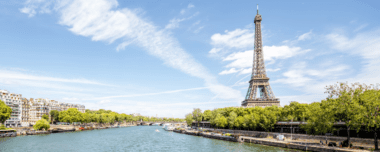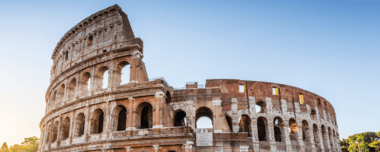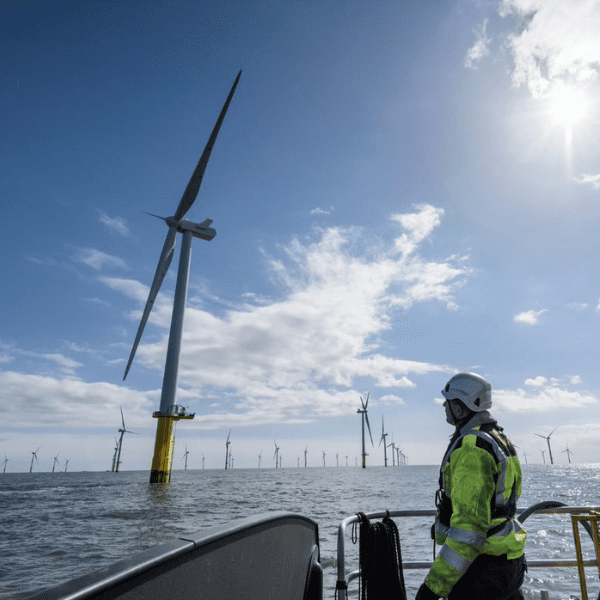Summary
- EU member states are united in the push for a carbon-neutral Europe by 2050, which requires huge investment in clean energy such as offshore wind.
- Click or scroll down for more information about the offshore wind market in:
Renewable energy is the single most critical factor for Europe when it comes to achieving its Green Deal zero carbon target by 2050. While climate change has provided huge impetus for the sector, the war in Ukraine has underscored the
importance of independent, safe, reliable, affordable sources of energy.
Offshore wind is a key and growing element in the drive for carbon neutrality and energy security. Wind already meets 15% of Europe’s electricity demand, according to Wind Europe, and that figure should top 50% by 2050. It’s already as high as 31% in Ireland and 44% in Denmark.
Most existing wind capacity is onshore, but governments and industry across Europe are now investing billions to develop and expedite scores of offshore wind projects, which are seen as key to large-scale renewable electricity generation in future.
Furthermore, the European Union is pushing for smart, green innovation and development across Europe through the €806.9 billion Recovery and Resiliency Facility (RRF). Distributed through national plans, this funding aims to help Europe recover from the pandemic and future-proof its economy and society, with sustainable, clean energy a key goal.
An unmissable opportunity for Irish companies
The huge surge in planning and construction in the industry is causing massive demand, serious supply chain bottlenecks and skills shortages. Furthermore, port infrastructure across the region needs upgrading to facilitate the transport, storage and preassembly of the huge components needed to build offshore wind farms.
While challenging for the sector, these issues mean there are significant opportunities for Irish firms with digital, engineering and marine expertise.
“The large developers, Tier 1 contractors and OEMs in offshore wind are looking for innovation, sustainable solutions, flexibility and a strong safety culture,” says Liam Curran, Senior Technologist with Enterprise Ireland. “Irish companies can find opportunities across the windfarm lifecycle, from initial feasibility studies and planning applications right through to construction/installation and subsequent operation and maintenance over decades.
How to support the offshore wind sector
Curran says companies should seek to offer services or solutions that maximise efficiency and safety or cut costs or risk. Being open to collaboration is critical, as these complex projects involve multiple stakeholders.
Enterprise Ireland sees particular opportunity for Ireland and Irish firms to lead when it comes to digital and data services. “The further projects go offshore, the more vital high-tech solutions become,” he explains.
“We want everyone involved in offshore wind in Europe to know the Irish are the people to go to when IoT, connectivity, communication systems or cyber security is needed,” he said, “and we want Irish firms with expertise in these areas to consider developing an offering for offshore wind if they haven’t already.”
In particular, the industry has significant need for support in the following areas:
- data collection and analysis
- cybersecurity
- remote condition monitoring
- telecoms and connectivity
- artificial intelligence, machine learning and IoT (internet of things)
- automation and robotics.
He adds that offshore wind also offers clear opportunities for:
- engineering companies
- contractors experienced in oil, gas, electricity and civil projects.
- specialists in energy infrastructure, power generation and grid management
- marine and ports services companies.
Irish firms already leading the way
Many Irish companies already service the offshore wind market. These include Gavin & Doherty Geosolutions, for example, a specialist offshore and marine engineering firm operating in 15 international markets, high tech surveying companies such as XOCEAN and Green Rebel Marine, and marine services specialists such as Alpha Marine and Fastnet Marine.
Digital and connectivity specialists meeting the needs of offshore wind clients in Ireland and overseas include Vilicom, Druid Software, TechWorks Marine, BrightWind Analysis, Exceedence and EMR Integrated Solutions.
Other firms such as Combilift and Qubus Systems are also catering to the offshore wind sector in Europe.
Take the first steps
Companies keen to join the offshore wind supply chain should first work to get up (and stay up) to speed on market intelligence. Attend industry events to build both knowledge and networks, and consider joining clusters such as the Gael Offshore Network. This is a cluster of more than 85 Irish companies with relevant digital, engineering and other expertise.
Expert advisors in Enterprise Ireland’s network of offices across Europe, together with its Market Research Centre in Dublin can support you as you examine the offshore wind opportunity. This can include help with market research, market visits, making local introductions and tendering.
Market snapshots
France
Having been slow to start, France is strongly committed to offshore wind and offers a welcoming market for Irish specialist firms.

Germany
Within eight years, Germany has become a global leader in offshore wind and welcomes collaboration and partnership with innovative suppliers.

Italy
Italy has been relatively slow to develop offshore wind, but interest is growing rapidly in the market, with urgent geopolitical and climate reasons to drive action.




